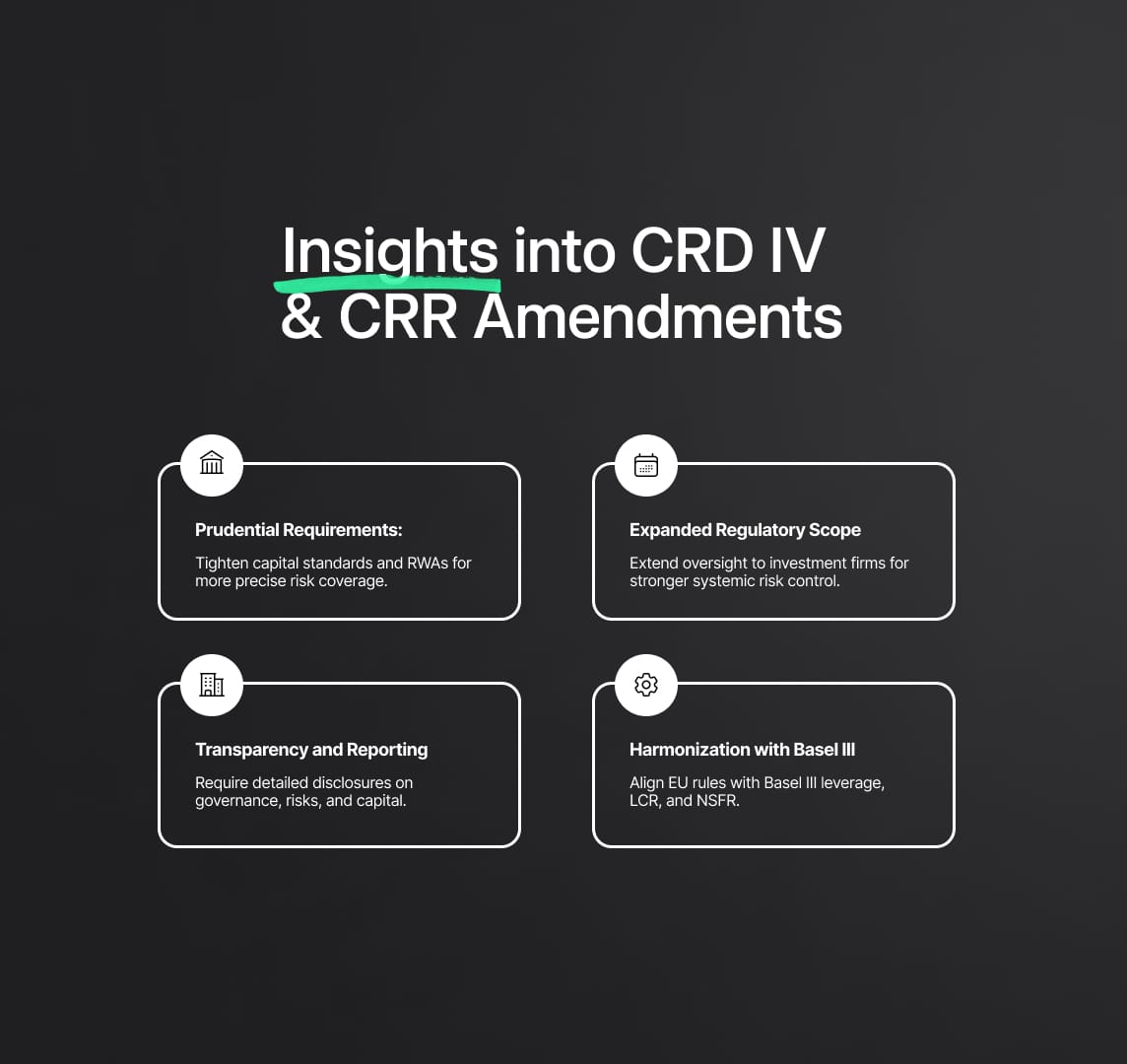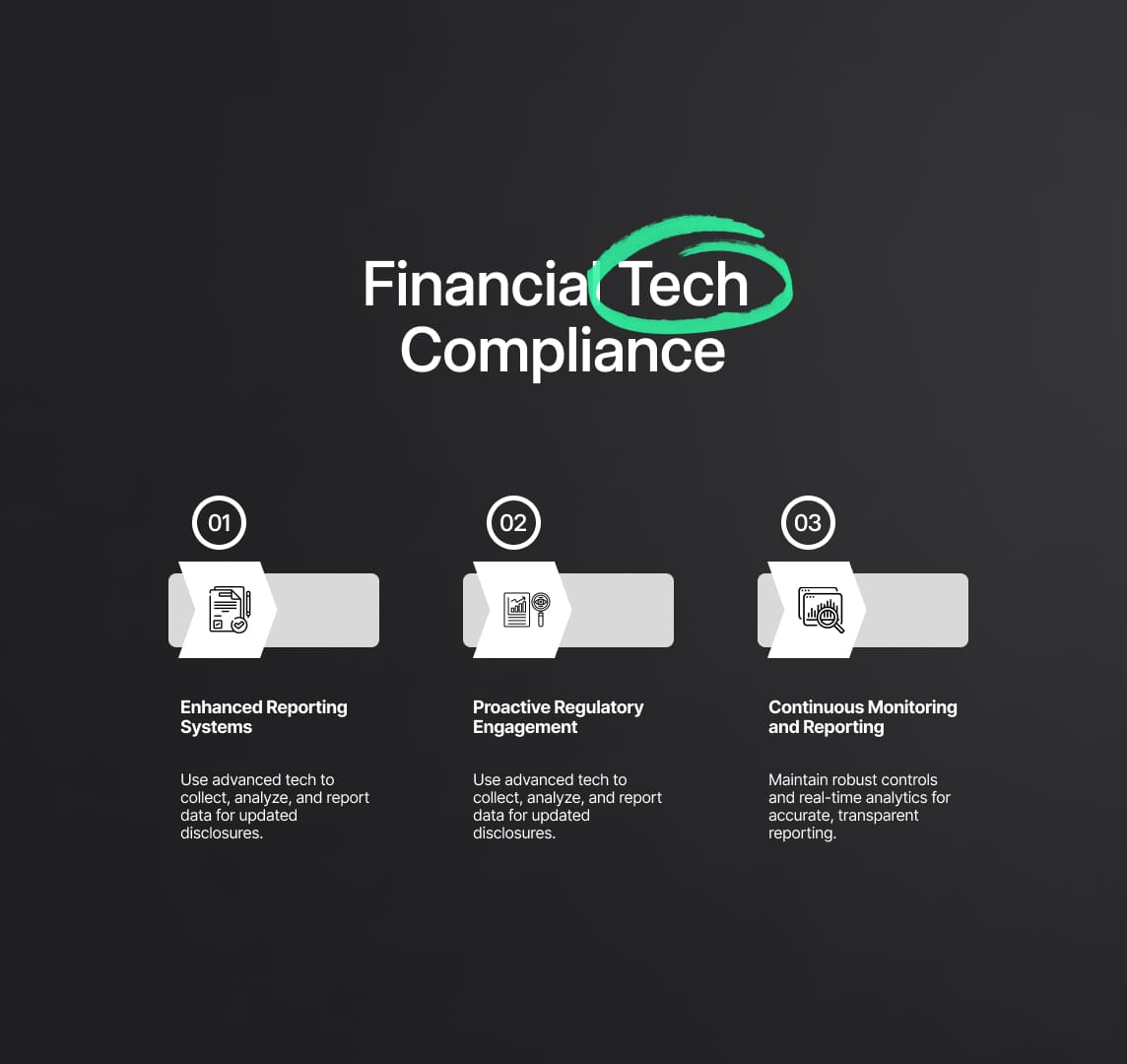CRD IV Amendments
The European Commission updates ITS for transparency in the EU financial sector, aiming to enhance regulatory compliance and stability. Amendments to CRD IV and investment firm regulations reflect a significant regulatory shift, emphasising robust risk management and financial transparency.

The European Commission has announced an update to the Commission Implementing Regulation (EU) No 650/2014, introducing revisions to the implementing technical standards (ITS) concerning the disclosure of information by Member State competent authorities (NCAs). This amendment aims to align with the latest changes in the Capital Requirements Directive IV (CRD IV) and the prudential arrangements for EU investment firms as per the Investment Firms Directive and Implementing Regulation (EU) 2022/389.[1]
The update focuses on the format, structure, content, and timing of the information NCAs are required to disclose, ensuring enhanced transparency and regulatory compliance within the European Union's financial sector. Key updates reflect adaptations in CRD IV introduced by Directive (EU) 2019/878, alongside new requirements for investment firm information disclosures.[2]
Source
[1]

The CRD IV amendments in 2024 signify a significant shift in the EU's financial regulatory landscape, aiming to enhance oversight, stability, and transparency in banking and finance. These amendments go beyond mere procedural updates, representing a comprehensive recalibration to address contemporary financial challenges.
This guide provides an in-depth analysis of the amendments for legal professionals, financial institutions, and regulatory bodies, ensuring stakeholders are equipped to implement the revised standards effectively and navigate the enhanced regulatory environment with precision. The amendments embed sophisticated legal mechanisms and compliance protocols, reflecting the European Commission's dedication to strengthening the EU's financial system and improving risk management and transparency in financial operations and reporting. Understanding the technical and strategic implications of these amendments is crucial for compliance.
The 2024 amendments to the Capital Requirements Directive IV (CRD IV) and the Capital Requirements Regulation (CRR) mark a significant milestone in the evolution of the European Union's regulatory framework for financial institutions. These legislative instruments are crucial to the EU's strategy for ensuring the stability, transparency, and resilience of the banking and broader financial sectors. The extensive revisions introduced with these amendments highlight the EU's determination to refine the regulatory environment, aiming for a financial ecosystem that is more transparent, inclusive, and equitable across Member States.

Technical Insights into the CRD IV and CRR Amendments
The CRD IV and CRR establish the foundation for regulating banks and investment firms in the EU, encompassing various financial activities. The 2024 revisions introduce technical improvements to strengthen this regulatory framework.
- Enhanced Prudential Requirements:
- Recalibration of Capital Adequacy Requirements: In line with Basel III guidelines, the revisions bring in more specific standards for categorizing capital instruments. This adjustment is designed to strengthen the capital quality and improve banks' ability to withstand losses.
- Sophisticated Methodologies for RWAs: The changes employ more sophisticated techniques to calculate risk-weighted assets (RWAs), ensuring a more precise reflection of actual risk exposure.
- Expanded Scope of Regulatory Oversight:
- The CRD IV has been expanded to include more financial entities, especially investment firms, to ensure they comply with strict prudential standards like traditional banks, as they are important to the EU's financial markets. This change reflects the evolving financial services sector and the importance of effectively managing systemic risks.
- Transparency and Reporting Enhancements:
- The changes require credit institutions and investment firms to disclose more information on risk profiles, governance structures, and capital adequacy. This aims to promote market discipline and provide stakeholders with valuable insights into the financial health and risk management practices of these institutions.
- Harmonization with Basel III Standards:
- One of the main objectives of the technical changes is to harmonize the EU's regulatory requirements with the international Basel III guidelines. This involves incorporating the Basel III leverage ratio, liquidity coverage ratio (LCR), and net stable funding ratio (NSFR) to maintain the competitiveness of EU financial institutions globally through the adoption of industry standards.
The 2024 CRD IV amendments take a proactive stance on financial regulation in the EU, highlighting the significance of top-notch capital, thorough regulatory supervision, greater transparency, and global alignment. Through strengthening these aspects, the EU aims to boost the robustness and competitiveness of its financial institutions, promoting a secure, clear, and fair financial environment throughout its Member States.
Enhanced Disclosure Protocols: Legal and Technical Perspectives
The 2024 amendments include stricter disclosure requirements for competent authorities to improve transparency in the financial sector by mandating the publication of key information on capital adequacy, risk exposure, and liquidity positions by June 30 annually. These changes aim to enhance the quality and timeliness of financial disclosures, leading to more informed decision-making and stronger market discipline.
Legally, this action marks a notable strengthening of regulations, mandating institutions to implement stronger internal controls and reporting systems. Financial entities must guarantee their disclosure procedures meet the new standards and can effectively convey complex risk information clearly. This demands a thorough comprehension of risk management frameworks and the accurate communication of risk exposures and capital adequacy per regulatory guidelines.
Annex Overhaul for Regulatory Clarity: Unpacking the Legal Implications
The amendments bring a complete redesign of Annexes I-IV, establishing new rules for information disclosure in a standardised format. The aim is to ensure consistency in compliance expectations among Member States by providing clear and detailed guidance on required disclosures. Legal experts and consultants are reminded of the need for thorough compliance reviews to align financial institutions' disclosure practices with the updated guidelines.
Standardizing disclosure formats in the EU helps regulate processes and reduce non-compliance risks by avoiding interpretative differences. This consistent method makes it easier to implement regulations, allowing institutions to prioritize data accuracy over navigating varied national interpretations.
Legislative Integration for Comprehensive Coverage: Legal Technicalities Explored
One key aspect of the 2024 CRD IV changes is the expansion of regulatory supervision to cover EU investment firms, in line with Directive (EU) 2019/2034 and Implementing Regulation (EU) 2022/389. This expansion aims to include a broader range of financial institutions under the CRD IV, ensuring that investment firms adhere to the same prudential standards as banks.
Legally, the expansion requires a detailed review of compliance strategies for investment firms, bringing them in line with the prudential rules typically linked to credit institutions. Standardizing regulations in the financial sector improves the EU's financial system's strength and promotes fair competition by preventing regulatory loopholes and encouraging equal opportunities for all financial institutions.
Legal Approaches to Ensuring Compliance with the 2024 CRD IV Amendments
The revisions to CRD IV in 2024 emphasise the importance of reviewing reporting and transparency in financial institutions, with the goal of improving the EU's financial regulatory framework. Legal advisors and regulatory consultants are essential in helping institutions meet the new requirements. This section discusses important compliance strategies for adapting to the changing regulatory environment.

Technical Compliance Strategies for Financial Institutions
- Enhanced Reporting Systems:
- Objective: Improve reporting infrastructure to efficiently manage the increased complexity and breadth of the necessary disclosures.
- Implementation: Implement cutting-edge technology solutions, such as complex data management and analytics platforms, that can collect, analyze, and present financial data in accordance with updated regulations.
- Goal: Achieve an efficient, accurate, and timely reporting system that fulfills enhanced disclosure obligations.
- Proactive Regulatory Engagement:
- Importance: Crucial for grasping the subtle consequences of the amendments and setting mutual expectations for compliance.
- Activities: Participate in consistent consultations, submit queries for clarification, and engage in regulatory forums and discussions.
- Outcome: Clarify uncertainties and establish financial institutions as compliant and cooperative within the regulatory framework.
- Continuous Monitoring and Reporting:
- Necessity: Essential for upholding the accuracy of financial reports by promptly identifying and disclosing any alterations in financial condition.
- Approach: Implement internal controls, perform frequent audits, and leverage real-time analytics to verify the organization's present financial status.
- Significance: Essential for maintaining the transparency and trustworthiness of financial statements, thereby guaranteeing continued adherence to regulations.
The 2024 CRD IV amendments represent a notable move towards enhanced openness, stability, and inclusiveness in the EU financial industry. Coordination among legal experts, financial institutions, and regulators is vital as the sector readies for change. Adhering to well-planned compliance strategies helps stakeholders effectively tackle regulatory challenges. This essential legal counsel is pivotal in bolstering financial stability and transparency within the EU. Leveraging this guidance as a primary tool enables stakeholders to successfully handle regulatory requirements, aligning operations with the ever-changing legal environment in the European Union.
Reduce your
compliance risks


